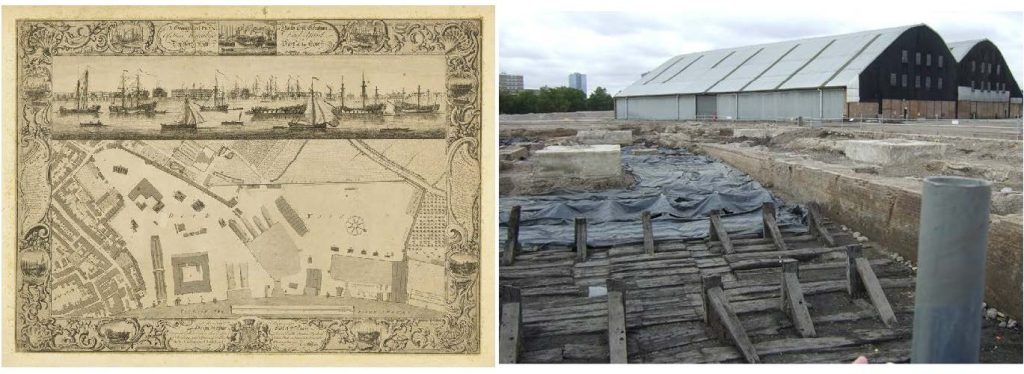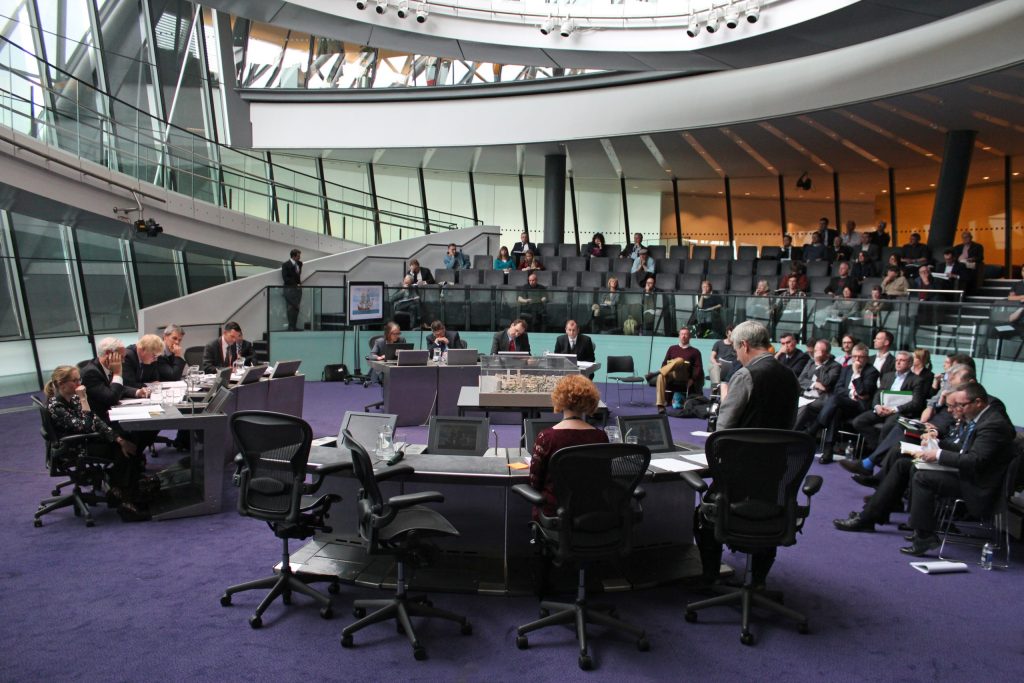A historic shipbuilding charity has announced its closure following significant pushback from a Hong Kong-headquartered property developer.
The Lenox Project, as the charity was known, had planned to build a replica 17th century warship on the Convoys Wharf in Deptford — a 20-years-derelict, 16.6-hectare former dockyard currently under redevelopment by Hutchison Whampoa for an estimated £1 billion.
In a recent social media post, the charity announced its decision close after its business plan was refused by independent assessors working on behalf of Lewisham Council and Hutchison.
According to the charity, Hutchison’s reluctance to collaborate openly with the regeneration project sealed its fate.

This latest episode has dealt the final blow to a grass-roots organisation which has until now played a leading role in platforming the concerns of the Deptford community over Hutchison Whampoa’s plans for Convoys Wharf.
Lenox Project former director, Julian Kingston, a 73-year-old Deptford local and life-long builder and fixer of boats, explained to the South East Londoner that the idea to build an identical-scale replica ship in Convoys Wharf materialised during a meeting with friends in 2011.
Convoys Wharf was one of England’s first Royal Dockyards, built in 1513 during the reign of Henry VIII within eyeshot of the monarch’s adjacent Greenwich Palace, and continued to produce ships for the next 300 years, only stopping around the 1830s.
Subsequently, the site was used variously as a foreign cattle market, an army supply reserve depot in WWI, and finally a newsprint storehouse for media mogul Rupert Murdoch’s News International in the 1960s, before Hutchison purchased the site in 2008.
Nevertheless, Hutchison’s initial designs included demolishing all non-listed structures on the site, incorporating 1,800 parking spaces, and building three tall buildings of 38 and 48 storeys.
Of the 3,500 homes planned for the site, only 525 of them (i.e., 15%) were to be ‘affordable’, split fifty-fifty between social and intermediate rents.
Kingston said: “I had become involved with all sorts of organisations within the community and basically everyone was objecting to the application on Convoys.
“I was building and working on boats back then and got kind of steamrollered in: someone asked, ‘Can’t you do something?’ and I said, ‘Well, we’re talking about a dockyard that once built naval warships — why don’t we build a replica?’”


The Lenox Project’s struggle to establish a realistic business plan dates to 2015, when then-London mayor Boris Johnson granted Hutchison Whampoa outline planning permission for Convoys Wharf, provided that, among other things, a technically feasible site for the Lenox be found.
Despite the Lenox’s preferred location being the existing Tudor era-dated ‘Great Dock’ (bottom left of the map), which though partially filled-up today remains substantially intact, Hutchison is understood to have insisted that the Greater London Authority (GLA) not take the charity’s preference into consideration.
Instead, the feasibility study determined to allocate the Lenox the north-western corner of the wharf, adding roughly £50 million in infrastructure costs as estimated by the charity, which brought the total project cost close to an untenable £100 million.
Over Facebook, the charity detailed its last-ditch effort to convince Hutchison to work in partnership with them, suggesting the developer build residences above the Lenox’s proposed visitor centre to generate additional revenues — but to no avail.
The post says: “We suggested a possible variation of the scheme […] but the developer would not engage with us about that.
“That was consistent with their lack of help and generally downbeat attitude to our project throughout.”

The Lenox Project was indeed a scheme to construct a life-size, fully functional replica of the two-deck, 70-gun HMS Lenox, which historian Richard Endsor has documented as having been built at Convoys Wharf in 1678.
But it was also a scheme intended to reconnect the residents of Deptford, as of London, to a cultural heritage that had been literally walled-off from them for the past two decades — devised by a group of concerned locals not wishing to see a site of historical significance rid of its history.
This fate, as the World Monuments Fund (WMF) has itself warned, would be disregarding the ‘rich heritage’ of the site.
More than that, the Lenox Project’s insistent campaigning to Lewisham added weight to the council’s opposition to Hutchison’s initial application, ultimately resulting in the alteration of their proposals, such as incorporating at least 30% ‘affordable’ and 70% ‘intermediate’ rent dwellings.
Local campaigning groups like Voice 4 Deptford still don’t think it’s enough; the organisation’s official web page documents its long-standing objection to the project, emphasising both its gentrifying potential and tardy delivery.

As of now, only three of the 22 plots have received definitive planning permission from the council, the only publicly visible sign of which is a marketing suite, which was installed on the jetty last year.
According to official documents, the outline planning permission given to Hutchison in 2015 is due to expire around 2030, a timeframe many consider too brief given the scale of the project.
The fate of Convoys Wharf remains uncertain, especially amid today’s national housing crisis, with politicians having proved themselves amenable to lowering affordable housing requirements if it means getting developers on side.
Today Deptford confronts its future one dissenting voice shorter.
Hutchison Whampoa did not respond to requests for comment.
Featured Image Credit: ‘The launching of the Lenox at Deptford on 12 April 1678’, a painting by Richard Endsor





Join the discussion